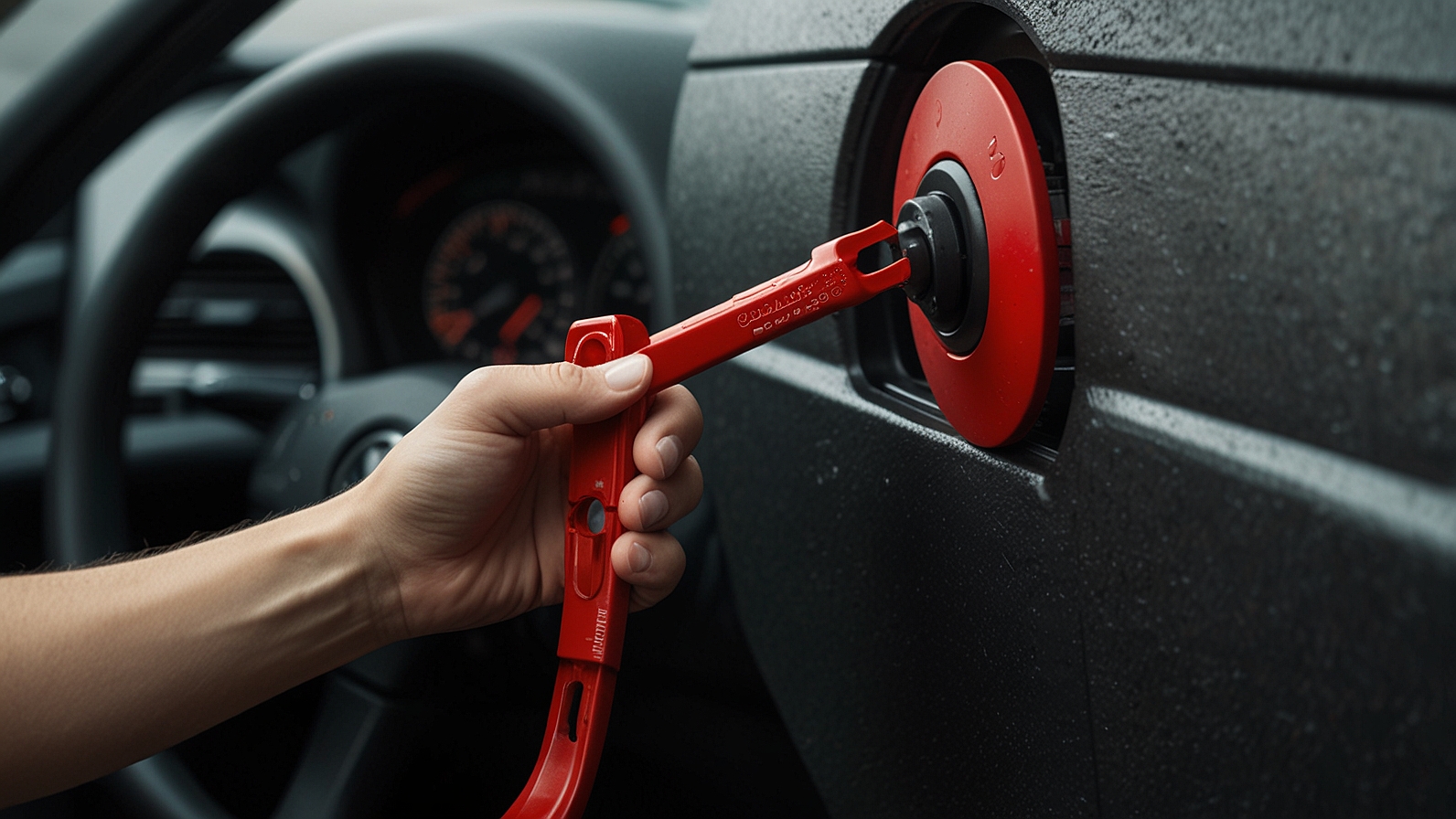How-To Guides
From Start to Finish: The Timeline of a Personal Injury Case

Navigating the complexities of a personal injury case can be a daunting process, filled with numerous steps and potential challenges along the way. Understanding the timeline from start to finish is crucial for anyone involved in such cases, whether they are a victim seeking compensation or a legal professional guiding their clients. This article outlines the typical stages of a personal injury case, providing insight into what to expect and how to prepare at each juncture. By breaking down the process into manageable segments, we aim to demystify the legal proceedings and empower individuals with the knowledge they need to advocate for their rights effectively.
Initial Consultation and Case Assessment
The journey of a personal injury case often begins with the initial consultation between the victim and an attorney. During this meeting, the personal injury lawyer will gather crucial details about the incident, including how it occurred, the injuries sustained, and any evidence or witness information available. This stage is essential for the attorney to evaluate the viability of the case and determine whether there is a valid claim to pursue.
Once the information has been assessed, the attorney will outline the potential legal strategies and options available to the victim. It’s important for victims to understand their rights and the legal landscape surrounding their case. The attorney will also discuss the potential costs involved, including any contingency fees, which can significantly impact the client’s decision to proceed.
The initial consultation is a time for the victim to ask questions and establish a rapport with their attorney. Building a strong attorney-client relationship is essential as the case progresses, ensuring communication remains open and transparent throughout the process. Victims should feel comfortable discussing their concerns and expectations, as this will help shape the direction of the case.
Investigation and Gathering Evidence
After the initial consultation, the attorney will launch a comprehensive investigation into the case. This phase involves collecting evidence, including medical records, police reports, and witness statements, which are vital for substantiating the victim’s claims. The attorney may also collaborate with experts or specialists to analyze the evidence and provide professional opinions about the case.
Accurate documentation and thorough record-keeping are critical at this stage. The information gathered will serve as the foundation for the case, directly influencing negotiations and potential court proceedings. Victims may also be asked to keep a journal detailing their experiences, including physical, emotional, and financial struggles resulting from the injury.
The investigation phase can be time-consuming, but it is crucial for building a strong case. An attorney who is meticulous in collecting evidence and aware of the local laws will significantly enhance the chances of a favorable outcome for the victim. This diligence during the investigation lays the groundwork for the upcoming negotiations or court actions.
Filing the Claim
Once sufficient evidence has been gathered, the attorney will prepare to file the personal injury claim. This involves drafting a demand letter outlining the victim’s injuries, the circumstances of the accident, and the compensation being sought. This letter serves as the first formal step in initiating the legal process and is often sent to the at-fault party or their insurance company.
In the demand letter, the attorney will articulate the expected damages, which may include medical expenses, lost wages, and pain and suffering. It’s crucial for the attorney to provide a clear and compelling argument, as this document can influence the response from the opposing party. The clarity and strength of the demand letter can either expedite a resolution or set the tone for the negotiations to come.
Following the submission of the claim, the opposing party will typically respond within a specified timeframe. They may accept the claim, propose a settlement, or dispute the allegations. How the victim and their attorney respond to this initial reply will be essential in steering the case in a favorable direction, whether that entails further negotiations or litigation.
Negotiations and Settlement Discussions
Negotiation is a critical aspect of the personal injury case timeline. After the claim has been filed, both parties often engage in settlement discussions to resolve the matter without going to court. The attorney will advocate on behalf of the victim, presenting the evidence and justifications for the compensation being sought. This phase requires strong negotiation skills and confidence in the case’s merits.
Settlements can vary significantly based on the complexity of the case, the degree of fault, and the willingness of both parties to compromise. Often, insurance companies will propose lower settlements; hence, it is crucial to have an informed attorney present to assess the adequacy of any offers. Victims should remain patient and consider all options, as rushing into a settlement can result in inadequate compensation for their injuries and losses.
If both parties reach an agreement, a formal settlement release is drafted, outlining the terms and compensation. Generally, once the victim accepts the settlement, they will relinquish their rights to seek further claims related to the same incident. If an agreeable settlement cannot be reached, the case may need to proceed to litigation, which can extend the timeline further.
Litigation Process
If negotiations fail, the case enters the litigation phase, which involves more formal legal proceedings. The first step is the filing of a lawsuit, where the complaint and summons are officially submitted to the court. This document outlines the plaintiff’s claims against the defendant and initiates the legal process, where a judge or jury will eventually hear the case.
Once the lawsuit is filed, both parties engage in discovery, the process of exchanging evidence and information. During discovery, depositions may be taken, where witnesses, experts, and the parties involved give sworn testimony. This phase can be lengthy, as both sides work to gather the information necessary to support their arguments.
As litigation unfolds, both sides may still have opportunities for settlement discussions. Many personal injury cases are resolved before reaching trial, often through mediation or further negotiations based on the evidence revealed during discovery. Remaining adaptable during the litigation process is vital, as the circumstances can evolve quickly based on the actions of either party.
Trial and Judgment
If a settlement cannot be reached, the case will go to trial, where both sides present their arguments before a judge and jury. During the trial, evidence is presented, witnesses are called, and both the plaintiff and defendant can make their case. This process can be intense and requires thorough preparation from the plaintiff’s legal team to effectively advocate for the victim.
The trial phase can be unpredictable, as the outcome relies on the jury’s perceptions and interpretations of the presented evidence. The attorney will aim to demonstrate the defendant’s liability and the extent of the victim’s damages persuasively. It is essential for the victim to remain involved and supportive during the trial as emotions can run high at this stage.
Following the trial, the jury will deliver a verdict, which may result in a judgment for the plaintiff or defendant. If the victim prevails, they may be awarded compensation for their injuries; however, this does not always conclude the matter. The losing party may choose to appeal the decision, which can lead to further legal proceedings and prolong the process even more.
The timeline for a personal injury case can vary significantly based on several factors, including the severity of injuries, complexity of the case, and willingness to negotiate. By understanding this general framework and working with experienced legal representation, victims can navigate this process effectively and seek the compensation they deserve.
How-To Guides
How Experts Remove Underground Fuel Tanks Without Disruption

Why Underground Fuel Tanks Eventually Need Removal
Across industrial and commercial properties, underground fuel tanks have served as reliable storage systems for decades. But as tanks age, they begin to corrode, weaken, and pose environmental risks that can no longer be ignored. That is why gas tank removal underground becomes an essential part of responsible facility management. These tanks operate out of sight, but their condition directly impacts safety, compliance, and long-term operational stability.
Underground tanks deteriorate in ways that are difficult to detect without professional inspection. Soil moisture, shifting ground, and constant exposure to fuel can create structural weaknesses that compromise the tank’s integrity. Even a small leak underground can spread contaminants far beyond the property line. Removing old tanks before these failures occur protects both the business and the environment.
How Underground Tanks Begin to Deteriorate
Unlike above-ground systems, underground tanks face constant pressure from surrounding soil. Moisture sits against the tank walls for years, gradually breaking down protective coatings. Fuel often contains additives and sediments that accelerate internal corrosion. Temperature changes expand and contract the steel, weakening welds and seams. Over time, these factors contribute to the need for gas tank removal underground before the tank reaches a critical point.
Many tanks installed 20 to 40 years ago were not designed to meet today’s environmental standards. Their materials and coatings eventually reach the end of their lifespan, making removal the safest and most responsible option.
Why Professional Removal Is Non-Negotiable
Removing an underground fuel tank is a highly regulated process. It requires specialized equipment, environmental expertise, and strict safety procedures. Even empty tanks can contain vapors that pose fire or explosion risks. Professionals manage this work using controlled methods that prevent accidents and protect the surrounding property.
A professional team begins by locating the tank precisely, exposing it through careful excavation, and removing any remaining product or vapors. Once the tank is safe to handle, it is lifted from the ground and prepared for disposal. Every step must be executed with precision to ensure compliance with environmental and safety regulations.
How the Removal Process Is Carried Out Safely
The process of gas tank removal underground follows a sequence designed to control risk and maintain stability. The area above the tank is excavated gradually to avoid damaging nearby utilities or structures. Once the tank is uncovered, specialists clean the interior to eliminate residual fuel and vapors. Only after this cleaning is complete can the tank be safely cut, lifted, or transported.
The team also inspects the surrounding soil for any signs of contamination. If contamination is discovered, additional cleanup steps must be taken to restore the site. These environmental safeguards ensure the property remains safe for future use and meets all regulatory expectations.
Why Environmental Testing Is a Central Part of Removal
Soil and groundwater testing confirm whether the tank leaked during its lifetime. This testing is not optional; it is required by environmental agencies to protect surrounding land and water sources. The results determine whether remediation is needed before the site can be cleared.
Testing provides critical information, such as the presence of petroleum residues, the depth of contamination, and whether nearby structures or land features may be affected. This data becomes part of the documented record that proves gas tank removal underground was completed responsibly and in accordance with regulations.
How Removal Supports Regulatory Compliance
Industries that use underground fuel tanks must comply with strict standards set by environmental authorities. Failing to remove a failing or outdated tank can result in fines, operational restrictions, or long-term liability. Removal demonstrates that the facility is taking preventive action to protect the environment and maintain safe operations.
Compliance is not just about avoiding penalties. It’s about safeguarding the long-term viability of the property. A well-executed removal shows regulators, auditors, and stakeholders that the business manages environmental responsibilities with care.
The Challenges of Working Beneath the Surface
Underground tank removal demands expertise because the work occurs in a concealed and unpredictable environment. Soil types vary widely, and conditions underground can change quickly during excavation. Tanks may be located near building foundations, active utilities, or paved surfaces that limit access. Professionals plan each removal carefully to avoid damaging surrounding structures.
Weather also plays a role. Heavy rain, heat, or freezing temperatures influence soil stability and require adjustments on the job. Despite these challenges, skilled removal teams complete the process with minimal disruption to facility operations.
Why Early Removal Protects Property Value
Allowing an old underground tank to remain in place can create risks that undermine the property’s long-term value. Even inactive or empty tanks can contain residue that contaminates soil over time. Many buyers, insurers, and lenders require proof that outdated tanks have been removed properly before approving transactions or underwriting coverage.
Early gas tank removal underground prevents these complications. It creates a clear record of responsible environmental management and allows the property to be used, sold, or redeveloped without concerns about hidden risks beneath the surface.
The Long-Term Benefits of Safe Tank Removal
Removing underground tanks strengthens the facility’s environmental profile, reduces long-term liability, and ensures the site meets modern regulatory expectations. It also opens the door for updated storage systems that provide easier maintenance, better monitoring, and improved safety features.
When a tank is removed responsibly, facilities gain confidence in the integrity of their property and reduce the risks associated with aging underground structures. Through proactive planning and expert execution, gas tank removal underground becomes a smart investment in the safety and future of the entire operation.
How-To Guides
How to Safely and Professionally Address Workplace Bullying

The workplace should be a place of safety and respect for all individuals. However, many Australian employees continue to face workplace bullying in one form or another. Workplace bullying can have long-term effects on one’s mental health, productivity, and overall well-being, and must be addressed in accordance with Australian laws and regulations.
What Is Workplace Bullying?
Workplace bullying is any form of repeated, unreasonable behaviour towards another coworker. This type of behaviour can be seen in many different ways, such as:
- Physical or verbal abuse or harassment
- Spreading rumours or malicious gossip
- Withholding information needed to do your job
- Intimidation, humiliation, threats, or belittlement
- Exclusion from work-related activities
- Unreasonable demands
Anyone can be a perpetrator or a victim of workplace bullying. This eventually leads to a decline in mental health, decreased productivity, increased stress, and isolation.
What to Do If You’re a Victim of Workplace Bullying
Workplace bullying should be dealt with immediately. Here are some ways to address the situation.
- Keep detailed records of all incidents (dates, times, who was involved, any specific acts, etc.).
- Approach a trusted colleague or superior about the incident.
- Approach the bully/harasser and tell them that their behaviour is unprofessional and unacceptable.
- Know your rights and familiarise yourself with your company’s anti-bullying policies and local labour laws.
- File a complaint with your company’s HR department. Otherwise, you can talk to your Health and Safety Representative or union representative.
If you are a victim of workplace bullying, remember that you are not alone. Unions and laws such as the Fair Work Commission and the Work Health and Safety Act are dedicated to protecting the rights of employees and promoting a healthy work environment.
How to Prevent Workplace Bullying in the Future
Workplace bullying can be prevented with proper action and policies in place. Here are some ways:
- Clear anti-bullying policies and reporting systems that protect all employees
- Adequate training for all staff
- Proper support systems and regular follow-ups
- Fostering a culture of respect and accountability
Standing Together Against Workplace Bullying
There is absolutely no room for bullying or any kind of intolerable behaviour in the workplace. You can always talk to your union about providing proper support and taking necessary action. Everyone deserves to feel safe, respected, and valued at work, and that starts with speaking up and supporting one another.
YOU MAY ALSO LIKE: C.W. Park USC Lawsuit: A Case Study in Workplace Discrimination
How-To Guides
The Levapioli Tool: Your Ultimate Guide to Scratch-Free DIY

Ever sunk an hour into a simple car repair, only to be met with the heart-sinking crack of a plastic trim piece? Your fingers are sore, your patience is thin, and you’re now facing a costly repair for a part you were just trying to fix.
We’ve all been there. The problem is rarely a lack of skill—it’s using the wrong tool for a incredibly delicate job. This is exactly the scenario the levapioli tool was designed to prevent. Think of it as the secret weapon that separates a clean, professional job from a DIY disaster.
What is a Levapioli? Your First Step to Scratch-Free Car Work
Let’s clear this up first: what exactly is this thing? Imagine a crowbar designed for surgery. That’s a levapioli.
It’s a precise, non-marring prying tool that acts like a key, expertly releasing hidden clips and pins without damaging the soft plastic or painted surfaces of your car’s interior. While “levapioli” is often used as a catch-all name (much like “Kleenex” for tissues), it technically refers to a style of sturdy, plastic pry bar that’s become a must-have in any garage.
Why Your Screwdriver is a Terrible Substitute
It’s tempting to grab that trusty flat-head screwdriver. It’s metal, it’s sturdy, it’s right there. But resist the urge! Using a metal tool on your car’s interior is like using a sledgehammer to crack a nut.
The cost of using the wrong tool is high: marred trim, gouged dashboards, and shattered clips that are a nightmare to replace. Here’s a quick comparison:
| Tool | Use Case | Risk of Damage |
|---|---|---|
| Flat-Head Screwdriver | Prying trim | Very High (gouges, cracks, paint chips) |
| Your Fingers | Removing clips | High (soreness, broken clips) |
| Levapioli Tool | Prying trim, removing clips | Very Low (when used correctly) |
A levapioli is made from rigid yet forgiving materials like nylon, so it applies force without leaving a mark. It’s all about finesse, not force.
How to Use a Levapioli Like a Pro: A Step-by-Step Guide
Okay, you’re convinced. Now how do you use this thing without breaking anything? Follow these steps:
- Identify the Clip Locations: Before you pry, gently feel along the seam of the panel. Look for slight bumps or gaps. A flashlight can help you spot the hidden fasteners.
- Choose the Right Pry Tip: Most levapioli kits come with multiple shapes—forked, flat, and curved. A forked tip is perfect for prying out circular clips, while a flat tip is ideal for sliding into tight seams.
- Work Slowly and Methodically: Insert your chosen tip, apply gentle, steady pressure, and listen for a soft pop. That’s the sound of success! Move a few inches over and repeat. Never try to pull the entire panel off at once.
- Keep a Magnet or Container Handy: For those tiny, flying clips that always seem to disappear. Trust us on this one.
Beyond Door Panels: 5 Unexpected Uses for Your Levapioli
This tool’s talent isn’t limited to door panels. Its versatility makes it a superstar for:
- Radio Head Unit Removal: Perfect for prying off the trim bezel around your stereo.
- Grille Removal: Safely unclip the front grille for cleaning or replacement.
- Dash Cam Wire Tucking: Gently route wires along the headliner and A-pillar without damaging edges.
- Wheel Arch Liner Clips: Quickly remove those stubborn fender liner clips for brake work.
- Household Electronics: Great for opening up tablets, phones, or game controllers without leaving a mark.
Choosing the Best Levapioli Kit for Your Needs
Not all pry tools are created equal. Here’s what to look for:
- Material: Most are durable nylon. Higher-end models from brands like OTC or OEM Tools might have a flexible metal core for extra strength on stubborn clips, but they’re always coated in plastic to protect surfaces.
- Kit Size: A basic 3-piece set is great for beginners. Enthusiasts might want a larger kit with specialized hooks and picks for every conceivable job.
- Feel: Look for tools with a comfortable, ergonomic grip. You’ll be holding it for a while!
3 Pro Tips to Try on Your Next Project
- Warm Up Plastic: On a cold day, warm the interior trim with a hairdryer for 60 seconds. It makes old, brittle plastic more flexible and less likely to crack.
- Tape is Your Friend: Put a piece of masking tape on the paint or delicate surface near your pry point for an extra layer of protection.
- Start from the Bottom: Clips usually release easiest from the bottom of a panel. Work your way up and around for the cleanest removal.
So, what’s the first trim job you’re going to tackle with your new favorite tool?
You May Also Read: Your Ultimate Engine Guide: Unlocking Practical Knowledge at enginefirm.com
FAQs
Is a levapioli the same as a plastic pry tool?
Yes, absolutely. “Levapioli” is commonly used to refer to a set of non-marring plastic pry tools and trim removers.
Can it really prevent all damage?
When used correctly, it drastically reduces the risk. However, old, sun-baked plastic can be brittle. Always work slowly and use heat to soften aged plastic.
What’s the best material for a levapioli tool?
Durable, rigid nylon is standard. Pro-grade kits often add a metal core for strength but keep a non-marring plastic coating.
Are the cheap sets on Amazon any good?
For the occasional DIYer, a budget-friendly set is a fantastic starting point and far better than using metal tools. They might not withstand daily professional use but are perfect for home garages.
What should I do if I break a clip?
Don’t panic! It happens to everyone. Keep the broken pieces, note the style and location, and order a replacement clip online or from a dealership. They’re usually very inexpensive.
-

 Education11 months ago
Education11 months agoMastering Excel: Your Comprehensive Guide To Spreadsheets And Data Analysis
-

 Tech1 year ago
Tech1 year agoHow To Choose The Best Forex Trading Broker?
-

 Business1 year ago
Business1 year agoExploring the Rental Market: Properties for Rent in Malta
-

 Blog11 months ago
Blog11 months agoArab MMA Fighters Shine Bright: Meet the Champions of PFL MENA
-

 Travel1 year ago
Travel1 year agoExperience the Best Desert Safari Dubai Offers!
-

 How-To Guides2 years ago
How-To Guides2 years agoComprehensive Guide to Cockwarming: Enhancing Intimacy and Connection
-

 Home Improvement2 years ago
Home Improvement2 years agoEco-Friendly Round Rug Options for Sustainable Living in NZ
-

 Apps and Games2 years ago
Apps and Games2 years agoDiscover Tickzoo: The Ultimate Platform for Video Content Lovers and Creators








